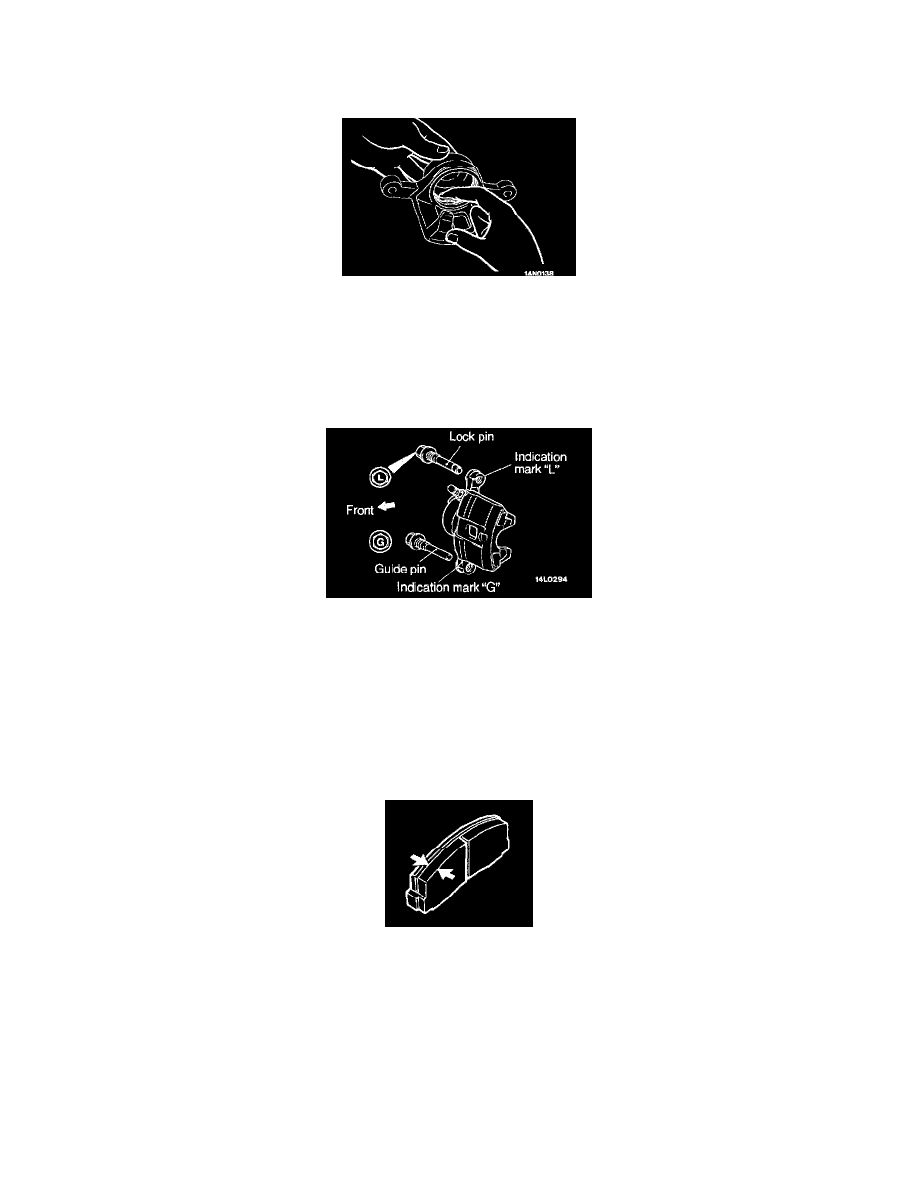Stratus Coupe V6-3.0L VIN H (2001)

Place a piece of wood, etc. against the caliper body as shown. Blow compressed air through the brake hose to remove the piston boot and piston.
<<B>> Piston Seal Removal
CAUTION: Do not use a flat-tipped screwdriver or similar tool to remove piston seal. These may damage the inner side of the cylinder.
1. Remove the piston seal with your finger tip.
2. Clean the piston surface and inner cylinder with alcohol brake fluid MOPAR(R) Brake Fluid/Conforming to DOT 3 or DOT 4.
ASSEMBLY SERVICE POINT
>>A<< Lock Pin/Guide Pin Installation
Install the guide pin as illustrated that each head mark of the guide pin and the lock pin matches the indication mark ("G" or "L") located on the
caliper body.
INSPECTION
-
Check the cylinder for wear, damage or rust.
-
Check the piston surface for wear, damage or rust.
-
Check the caliper body or sleeve for wear.
-
Check the pad for damage or adhesion of grease, check the backing metal for damage.
PAD WEAR CHECK
WARNING:
^
Always replace both brake pads on each wheel as a set (both front wheels or both rear wheels). Failure to do so will result in uneven
braking, which may cause unreliable brake operation.
^
If there is significant difference in the thickness of the pads on the left and right sides, check the sliding condition of the piston, lock pin
and guide pin.
Measure thickness at the thinnest and most worn area of the pad.
Replace the pad assembly if pad thickness is less than the limit value.
Standard value: 10 mm (0.39 inch)
Minimum limit: 2.0 mm (0.08 inch)
